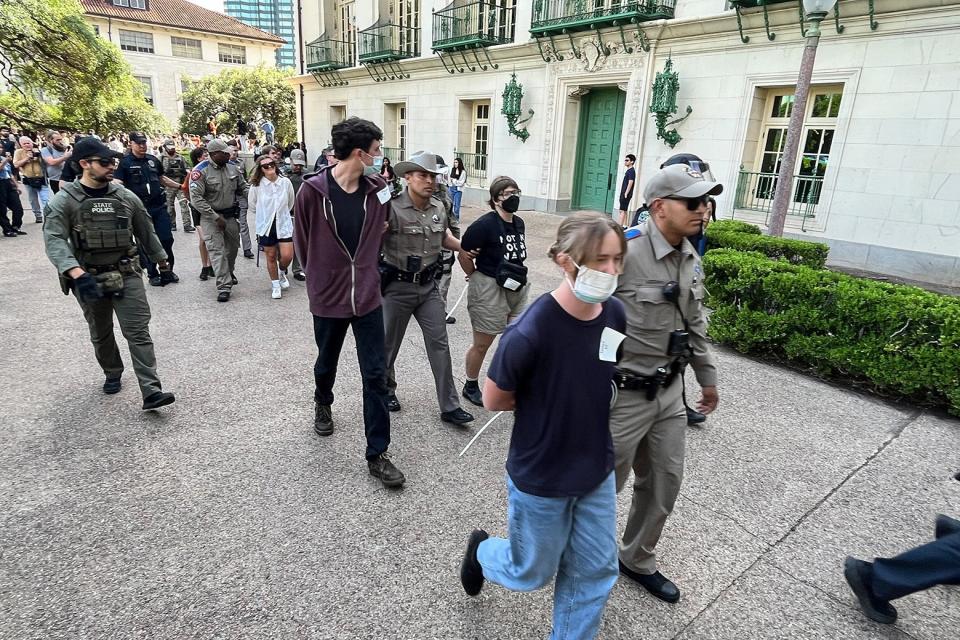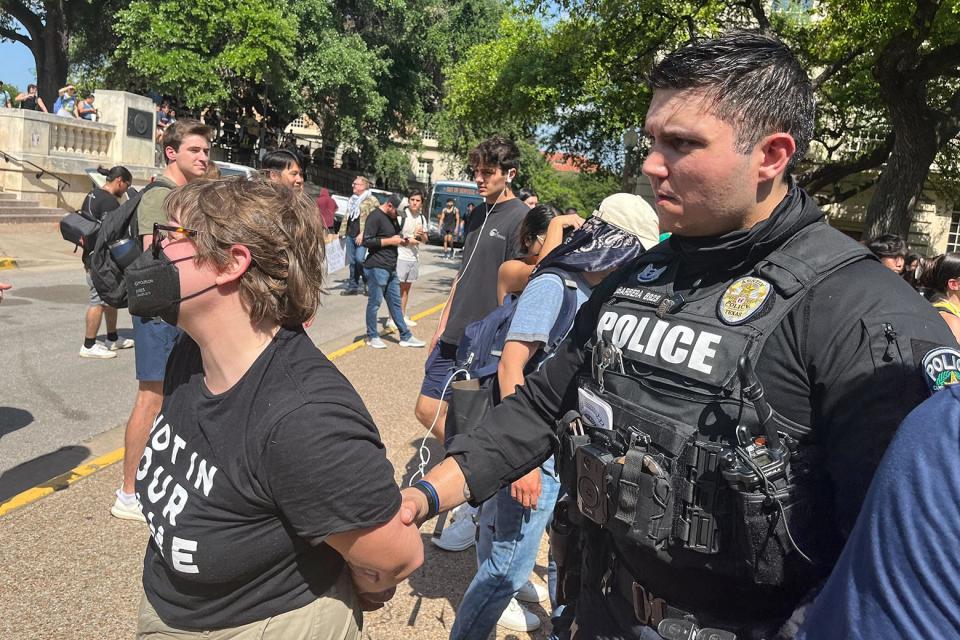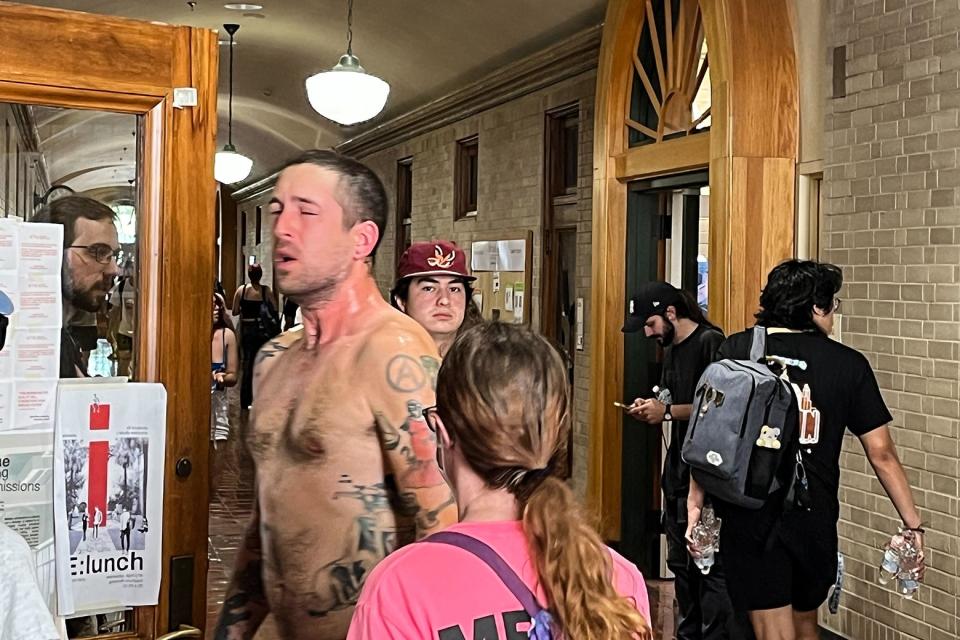As I Researched at the University of Texas on Monday, Something Heavy Hit the Window. It Had Begun.
AUSTIN, Texas—At 4 p.m. local time Monday, a normal scene on an American campus unfolded. The staff at the Harry Ransom Center announced that the reading room would be closing early. “You should go up to your research offices,” one librarian said. “It’s not safe to go out the front doors right now.”
Through the windows overlooking one of the University of Texas’ stone terraces, you could see students pouring from the stairways and passageways, sprinting away from the South Mall, where Gaza protesters had spent the day confronting Austin city police and Texas state troopers. Something heavy hit one of the windows, and a librarian who’d been observing scurried away.
The temperature on campus was in the mid-80s, but it felt hotter with the press of bodies. Earlier that afternoon, in defiance of three dispersal orders sent through the university’s emergency alert email system, a crowd of several hundred students had formed a circle around a cordon of armored-up police officers. Inside the circle, student protesters were being zip-tied and led away, one by one, as Legal Aid reps in neon-green caps got their names, dates of birth, and phone numbers.


One tall, lanky young man refused to walk and was carried, facedown, by two officers. As they passed a stanchion at the edge of the quad, the protester turned his head to catch its edge, bending his neck awkwardly. “You’re hurting him!” other protesters shouted. The legal rep came closer, and a red-faced officer pointed at her with the hand not holding up the man and shouted, “Get the hell back!”
They set the protester facedown on the pavement of 22nd Street, at the foot of the steps leading to the UT tower. He looked up, looked around, then rested his cheek on the pavement. Here, at least, there was shade. A man in his 40s, staying safely a few steps away from the police, said, “This is my student. He’s my student! I just want to make sure he’s OK.” He was brushed aside by a cop rolling an office chair up the street. They lifted the protester by the arms, set him in the chair, and rolled him away.
“Is there anyone I should call for you?” the professor asked. “Call my mom,” the student said.

Right at 4 p.m., a witness later said, police at the edges of the protest sprayed pepper spray from silver canisters, and chaos ensued. Officers cleared out the South Mall, sending protesters out toward the library, where they reassembled, chanting: “Off! Our! Campus!” In Sutton Hall, a beautiful cream-brick building that’s part of the architecture school, medics in pink T-shirts sprinted down the hallway to aid protesters in distress. A guy with a beard and a nose ring sat exhausted in a chair, eyes closed, snot running down his face. He poured water from a bottle over his eyes. “Thank you for the water,” he said. A young woman wept, face as red as a cherry, as she was led into the medical room, a student lounge. A handwritten sign near the door read: “This is a safe space, find somewhere else to detain students or better yet, don’t.”
Outside, a dozen or so arrestees were led toward the student union to a chorus of boos. The crowd was roaring now, held back by a group of state troopers and their mountain bikes. The front row of protesters held open umbrellas in front of their faces. From the terrace above, dozens of students watched, cameras out. The bike police slowly retreated down 22nd Street, letting the protesters advance back toward the mall. When they climbed onto their bikes and rode away, the crowd cheered. By 5, a few dozen hardy students had returned to the South Mall, but the rest were clearing out, looking for friends or talking on the phone. This was the third day of serious protests and the second day of arrests; tomorrow is forecast to be hotter.

